Like many folks, when the Guggenheim Baseball Management group (GBM) purchased the Los Angeles Dodgers in March of 2012 for an unprecedented $2.15 billion, the most money ever spent for any professional sports team, I had no idea who these people were (well, except for Earvin “Magic” Johnson, of course). Sure, I read about them in newspapers and on-line, but to be quite honest, I still know relatively little about them; so I decided to look into GBM a little deeper. What I found out is that aside from Magic Johnson and Stan Kasten, the rest of the GBM group chooses to remain pretty much behind the scenes.
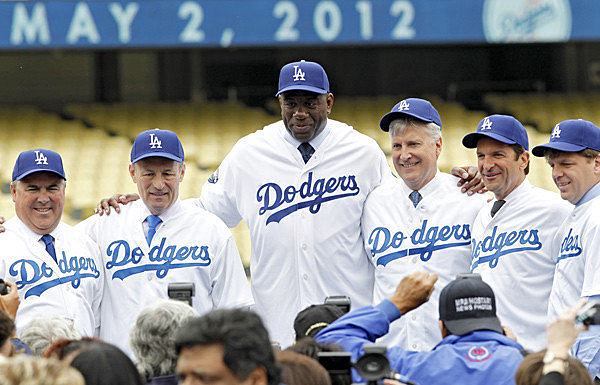
The Guggenheim Baseball Management group – Bobby Patton, Stan Kasten, Earvin “Magic” Johnson, Mark Walter, Peter Guber and Todd Boehly. (Photo credit – Robert Gauthier)
During their first full season as the new Dodgers owners (excluding April, since they didn’t officially take over control of the team until May 1, 2012), the six-man GBM group spent well over $300 million to acquire Shane Victorino, Joe Blanton, Hanley Ramirez, Randy Choate, Brandon League, Adrian Gonzalez, Carl Crawford, Josh Beckett and Nick Punto to build what was expected by many to be a guaranteed post season team around Dodgers superstars Matt Kemp, Clayton Kershaw and Andre Ethier. Unfortunately and as we all know, the Dodgers fell one game short of these expectations, this in spite of having perhaps the most powerful line-up on paper. But as we all know, the game ins’t played on paper.
The Dodgers/Red Sox trade that included Gonzalez, Crawford, Beckett and Punto for Dodgers first baseman James Loney and starting pitcher Rubby De La Rosa and prospects Jerry Sands, Ivan De Jesus Jr. and Allen Webster was the biggest trade (money-wise) in MLB history. And while many hoped for immediate results for the 2012 season, in reality the trade was made more so for the 2013 season and beyond – this because of a Dodgers starting rotation that had been decimated by injuries, not to mention an anemic Dodgers offense with runners in scoring position.
In addition to these huge non-waiver and waiver trade acquisitions in July and August, the Dodgers also signed a number of Latin American prospects from the Dominican Republic, Venezuela and Mexico. And, of course, they also signed (basically) unseen and unproven Cuban prospect Yasiel Puig to an unbelievable 7-year / $42 million contract. If nothing else, the Guggenheim Baseball Management group clearly showed the baseball world and Dodger fans that they weren’t afraid to spend money (and a lot of it) and that they were serious about their commitment to build a championship team and re-establishing a domestic and international farm system that was once considered the very best in all of baseball.
Within two weeks after the conclusion of the almost successful 2012 season, GBM also began major renovations to 50-year-old Dodger Stadium, most notably a complete renovation of the home and visitors’ clubhouses. These improvements will include expanding the physical size of the respective clubhouses along with renovating the Dodgers indoor batting cage and adding a visitors’ batting cage. State-of-the-art video and trainers rooms will also be added to the new clubhouses. GBM is also adding a brand new state-of-the-art video board (jumbotron) to the stadium along with full (and free) WiFi access throughout the entire stadium. This is great news for those of us who spend time in the Vin Scully Press Box, where internet access is extremely slow – not to mention the fear of blowing out the entire Dodger Stadium electrical system every time you plug in a computer or other device).
So who are these guys and their seeming endless river of money? Sure we all know Magic Johnson and know that he has been involved in several extremely successful business ventures since retiring from the NBA, and most of us know Stan Kasten from his tremendous success with the Atlanta Braves and Washington Nationals (along with the Atlanta Hawks of the NBA), but what about the other four members of the Guggenheim Baseball Management group… the actual money people? Who are these guys and where did all their money come from?
First and foremost is Mark Walter, the “controlling partner” of the team. Mark is the chief executive of Guggenheim Partners, an investment and advisory firm with more than $125 billion in assets (therein lies that river of money). With headquarters in New York and Chicago, Guggenheim Partners was founded in 1999 by the Guggenheim family (go figure).
Perhaps best known for their internationally renowned Guggenheim Museum in New York, Guggenheim Partners have pretty much remained under the business world radar. They did, however, recently make headlines when they entered the bidding process to purchase Anschutz Entertainment Group (AEG), which owns the L.A. Kings, L.A. Lakers, L.A. Clippers, L.A. Galaxy, Staples Center, L.A. Live, The Nokia Theater (you see where this is going), the brand new and beautiful Barclay Center in Brooklyn (home of the NBA’s Brooklyn Nets), and will soon own an NFL approved stadium in downtown Los Angeles with plans of drawing a current NFL team (more likely) or an expansion NFL team (less likely) back to a starving Los Angeles football market.
Although Walter didn’t exactly bleed Dodger Blue when his newly-formed Guggenheim Baseball Management group purchased the Dodgers, he was frequently (and I mean very frequently) seen around Dodger Stadium this past season. Walter, an Iowa native, attended Northwestern University Law School in Chicago and absolutely loves talking baseball with anybody – including fans. As every successful businessman does, Walter has surrounded himself with the the best of the best in the baseball business; something that his predecessor never had a clue about.
Next is Todd Boehly, Mark Walter’s right-hand man and president of Guggenheim Partners. The Bethesda, MD native is a graduate of William & Mary in Virginia and worked for the highly successful Credit Suisse First Boston and J.H. Whitney & Company in Connecticut before joining Guggenheim Partners in 2001. For as outspoken and visible as Magic Johnson and Stan Kasten are, Boehly is more of a behind-the-scenes member of the Guggenheim Baseball Management group, however he is no less passionate about the team.
Peter Guber is the Hollywood connection behind the Dodgers (you knew there had to be one). The Boston-area native is a film producer and executive, and CEO and chairman of Mandalay Entertainment Group. His noteworthy film credits include “Batman,” “Rain Man,” “Flashdance” and “The Color Purple.” Guber is anything but a sports business rookie, as he is part owner and co-executive chairman of the Golden State Warriors of the NBA. Additionally, Mandalay Entertainment Group owns several minor league baseball teams including the Triple-A affiliate of the New York Yankees.
Fort Worth, Texas native Bobby Patton is a well known investor in oil, gas and real estate, primarily in Texas and Kansas. Patton is a long-time client of Guggenheim Partners and was eager to join forces with Walter’s Guggenheim Baseball Management group. Patton has been described as a rancher-investor and a big player in political donations in Texas, including his support of former Houston Mayor Bill White in his unsuccessful run for governor against incumbent Rick Perry. Like Boehly, Patton is more of a behind-the-scenes guy in the GBM group.
And, of course, the two not so behind-the-scenes guys and the two most prominent faces of the Dodgers and Guggenheim Baseball Management group are the aforementioned Magic Johnson and Stan Kasten, who are pretty much at Dodger Stadium full-time during the season and even during the off-season.
And while Magic may get the most “face time” of the group, it is Kasten who makes most of the personnel decisions for the team based on recommendations from General Manager Ned Colletti, Vice President of Amateur Scouting Logan White, Vice President of Player Development De Jon Watson and recently appointed Vice President of International Scouting Bob Engle.
But make no mistake about it, when you are investing and spending hundreds of millions of dollars to build a winning baseball team and re-building your farm system, this on top of having spent $2.15 billion to purchase the team, you can pretty much bet that all six of these guys have a say in what goes on behind those closed Dodger Blue doors.




 November 19th, 2012 at 7:15 am
November 19th, 2012 at 7:15 am  by Ron Cervenka
by Ron Cervenka 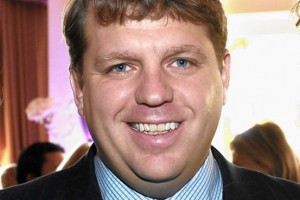
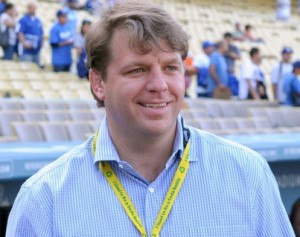
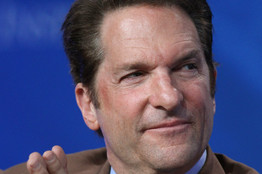
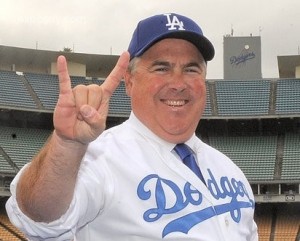
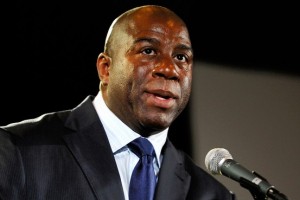
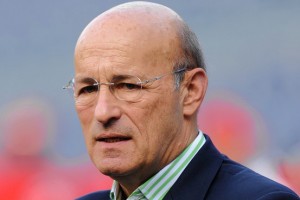
 Posted in
Posted in 

Quite a gamble if it all backfires. I truly hope this works out the way we hope it does. But the one thing money can’t fix is injuries! Lets hope we stay healthy next year.
I am confused by your “Quite a gamble if it all backfires” comment, Mike – what’s to backfire? If the moves that the Dodgers have made (and will make) don’t work out, they move on.
From an injury standpoint, every baseball player is a gamble. But if a team is reluctant or intimidated to sign a guy to a big contract because he might get injured, you will never field a winning team. And who’s to say that Clayton Kershaw or Matt Kemp or Andre Ethier or Shawn Tolleson or any other homegrown player won’t get injured.
The point here is that the Dodgers now have a very spirited ownership group that also just so happens to have the financial wherewithal to keep moving forward no matter what happens, something that they never had under McCourt ownership. With McCourt, it was a finger-in-the-dyke approach to fixing things, whereas with the GBM group, they can afford go out and get help if/when needed (or promote from within from a revamped farm system).
We all know that money does not guarantee championships, but when you have a group of guys with a passion to win and the means to fix or replace broken parts (through free agents, trades, or from your re-build farm system), there is simply no better position that the Dodgers could possibly be in than they are right now with this ownership group.
I think that you may be looking at this with short-term vision rather than long-term. If you look long-term, you will see that the Dodgers are in a far better position and certainly more stable than any other team in the MLB. As such, you can bet that everyone will want to be a Dodger – just like the good old days.
When I was in Atlanta this fall for the Dodgers’ series with the Braves, Bobby Patton was VERY visible both at the hotel where we and the Dodgers were staying, and at Turner Field where he would cruise the stands looking for Dodger fans and engage them in conversation.
It’s funny that you mention that, ebbetsfld. While researching this article, Bobby Patton seemed to be the most approachable (besides Kasten) and an all around great guy. I suspect that his other business ventures (i.e. – his real job) prevent him from spending more time around Dodger Stadium (so, too, with the other owners).
The one thing that I noticed about all of these guys is that they all are like excited little kids when it comes to the team, which I absolutely love seeing. They all have that spark in their eyes; something that you never saw with Frank McCourt.
Thanks for the run down.
Just referring to injuries, that’s all. As stated in your previous blog about spending money, I just can’t comprehend spending as much money as they are on human beings. But as has been stated many times before and not beating that horse, who cares it ain’t my money!!
Steven Cohen implicated in massive insider trading scheme. Perhaps he is not involved but the Dodgers didn’t need to be involved in it. Good job I don’t pick owners.